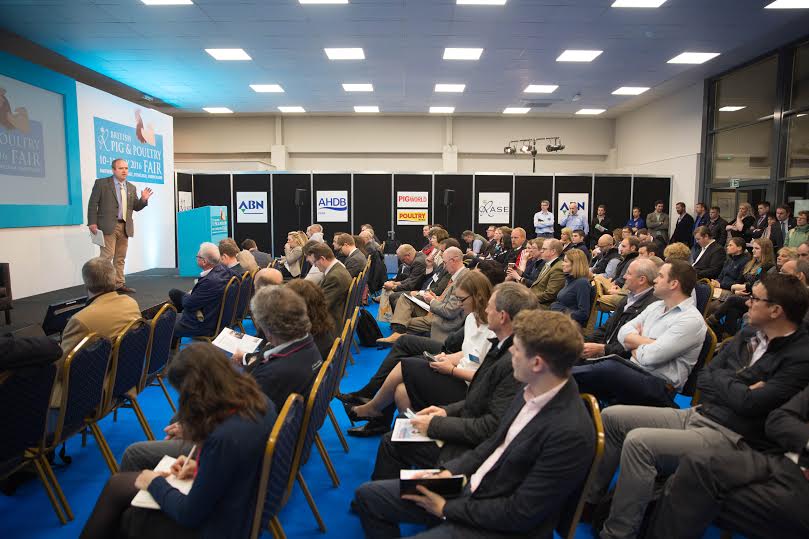
Visitors flocked to the first day of the British Pig & Poultry Fair on Tuesday, with standing room only at the ever popular forum programmes.
Kicking off with the outlook for the poultry and egg sector were Chris Hall from Cargill and Tom Willings, formerly of Noble Foods.
That was followed up by the pig market outlook featuring Phil Woodhall from Thames Valley Cambac and Meryl Ward of AHDB Pork.
Although the sectors were facing extremely different challenges and opportunities, there were also considerable similarities, with retail price pressure, potential oversupply, and a need for innovation a few of the common themes.
In the egg sector, retailer price wars had slashed the price of six eggs from £1.40 two years ago to just 79p now, said Mr Willings.
"At the same time volume sales have grown at an unprecedented rate – but we are bleeding value.”
There was still huge opportunity for growth in sales, but he forecast a period of oversupply in the medium term.
"I suspect there are tougher times ahead – and I do worry about what will happen when the cost of feed increases.”
As demand increasingly moved away from colony and barn eggs to free-range systems, the industry would have to find a way to structurally change in a measured manner to avoid oversupply, he added.
Meat is in a very strong position
However, on a more positive note, consumer demand for healthy, high protein, convenient food placed eggs and poultry meat is in a very strong position.
In the poultry market, volume sales had increased by 5.2% over the past year, but in price terms the total spend was only 1.5% up, said Mr Hall.
Duck was outperforming both chicken and turkey, with a 45% increase in volume sales and a 37% rise in value.
"That is really being driven by a huge amount of innovation – duck is leading the way."
Processors could learn from the duck sector by making better use of the whole carcass at a time when consumers were increasingly demanding quick and easy cuts like breast fillets, added Mr Hall.
The same was true in the pig sector, with consumers eating more ready meals and snacks and taking less time to prepare meals from scratch, said Mr Woodhall.
Sales of fresh and processed products like sausages had declined, and more needed to be done to produce innovative products. "Savoury snacks are where the future is."
Pig prices had slumped over the past couple of years, as slaughterings and carcass weights both increased, he added.
Now likely to ease
However, UK and EU production was now likely to ease, the UK premium over EU pork had narrowed, and consumption was tracking back up.
Exports of pigmeat had also recovered to near the high levels of the late 1990s, said Mrs Ward.
"In 2016 exports will be worth £390m and there is a lot of strategic work going on to open up new markets."
With exports so important to the sector, retaining disease-free status and having solid contingency plans in place was vitally important, she added.
In the afternoon sessions, producers heard how to make marginal gains in productivity and profitability through small changes.
ABN explored how producers could benefit from innovation in nutrition, while a range of farmers and industry experts discussed how technology, performance recording and everyday attention to detail was helping them to improve their own businesses.
"With more than 80 new products highlighted in the new Innovation Trail, visitors had plenty of bright ideas to take home to improve their businesses," said Fair Organiser Alice Bell.
"The atmosphere on the first day of the Fair was extremely upbeat, and we are looking forward to a busy day tomorrow, kicking off with a topical Brexit debate with BBC Farming Today."
